

Max Davies
2026 GWM Haval Jolion review
4 Hours Ago
Vehicle to load (V2L) is a feature that is becoming increasingly common on electric vehicles. But what can it do?

Contributor
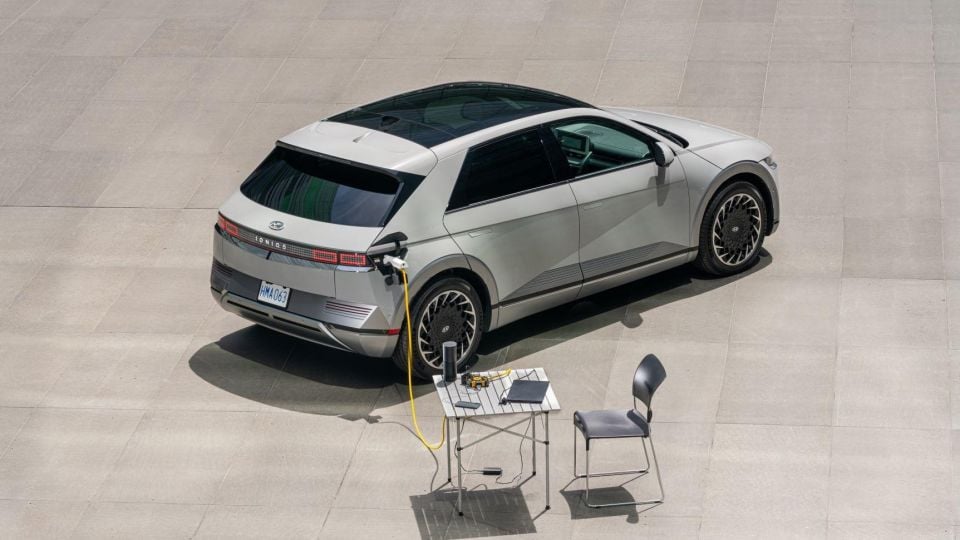

Contributor
Perhaps the two most fundamental components in any electric vehicle powertrain are the batteries and the motors. In normal operation, the batteries power the motors, which causes the vehicle to move.
When the vehicle is parked or sitting idle, however, the batteries aren’t used. Recently, EV manufacturers have begun to think about how these batteries could remain useful in such situations.
One of the results of this thinking is the introduction of vehicle-to-load (also known as V2L) functionality in some recently launched EVs. Put simply, this feature allows the large batteries in electric vehicles to power something external to the car, such as a domestic appliance.
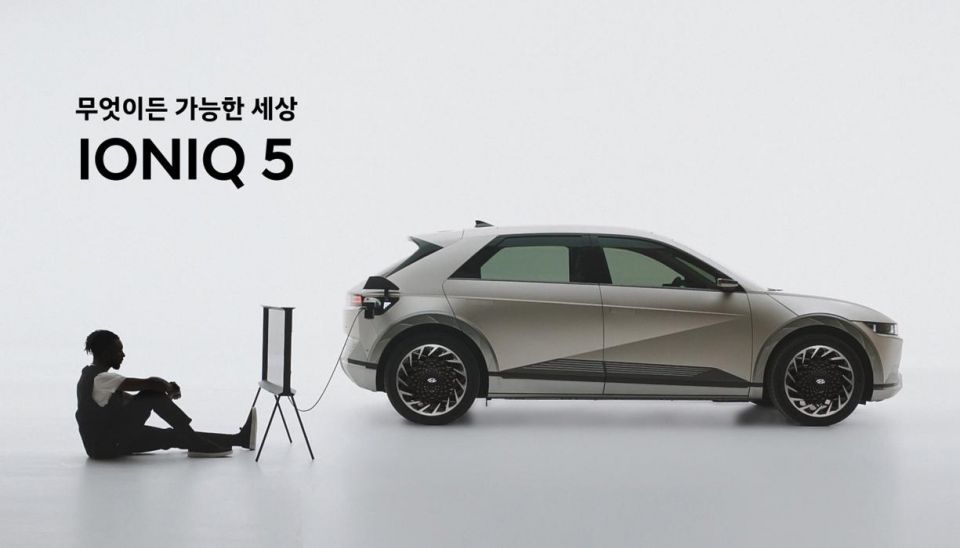
Perhaps the most obvious practical benefit of V2L technology is that it makes amazing camping trips possible.
With an electric SUV fitted with V2L technology, for example, it would be theoretically possible to drive off-road to a remote camping location, and then draw power from the car’s battery to use everyday appliances such as a coffee machine, microwave, or an electric pump for inflating an air mattress.
V2L functionality can also have benefits in more serious situations, including rescue and relief efforts during natural disasters or other crises.
Mitsubishi, for example, says it used V2L technology in suitably equipped i-MiEV vehicles as a backup power source in the aftermath of the 2011 Fukushima earthquake and tsunami, and more recently to power mobile refrigeration appliances to deliver COVID-19 vaccines in remote areas of Indonesia.
When purchasing an EV that claims to offer V2L functionality, it’s important to look out for the actual wattage (electrical power) that the car can output, and the specific adapters or other specialised equipment that may be required to connect the car to an everyday 240V appliance that uses the standard three-pin plug.
Hyundai’s recently launched Ioniq 5, for example, features V2L functionality with an output wattage of 3.6kW. This is more than sufficient to power everything from a sandwich press to a laptop, and Hyundai includes an adapter with the vehicle.
The adapter has one end plugging into the car’s charge port, and the other end containing a female three-pin socket to plug appliances into. Watch Paul explain it above.
Other EVs may have a lower output wattage or may not come bundled with a similar adapter that can be used to readily connect appliances or devices to the car’s battery.
The Mitsubishi Outlander PHEV (plug-in hybrid electric vehicle), for example, is optionally available in certain markets with a 1.5kW ‘AC power feeder’ that can be used to power other appliances.
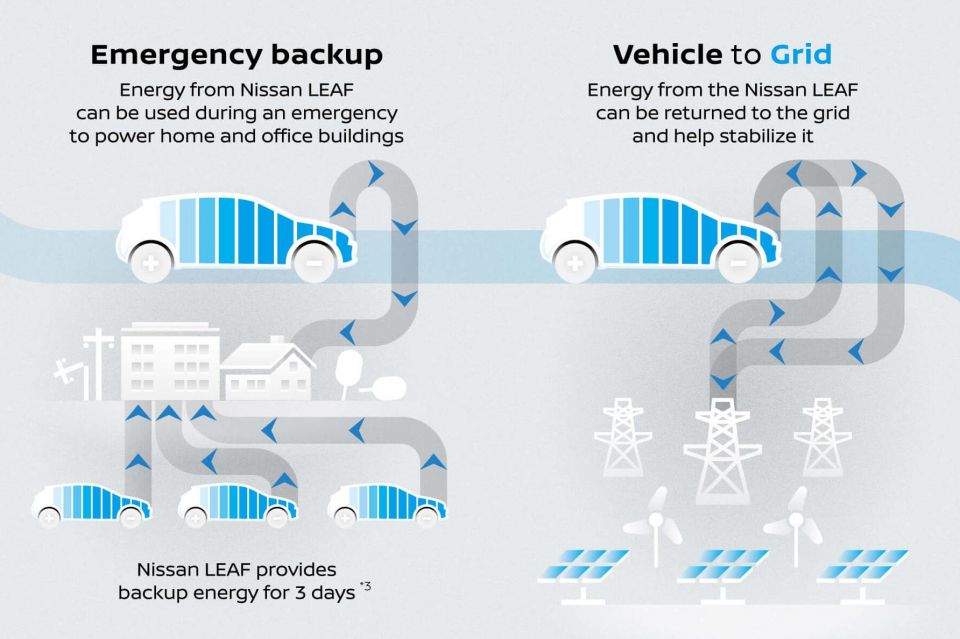
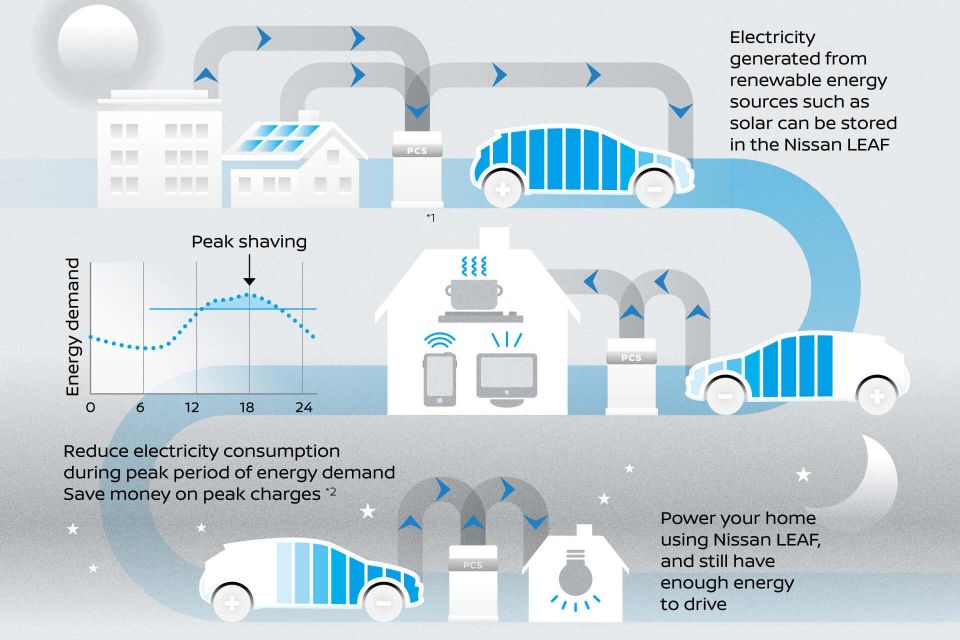
Vehicle-to-home and vehicle-to-grid (V2H and V2G) technology uses the same underlying principle described to supply power back to the home or electricity grid from the vehicle’s battery.
The best way to think about V2G and V2H is that it’s a ‘power sharing’ concept between the home/electricity grid and the vehicle, that has the potential to make households and offices less reliant, or wholly unreliant, on the national electricity grid for their energy needs.
The power sharing is undertaken primarily through a two-way charger (also known as a bi-directional charger), which is a special type of charger that’s able to feed current back into the electricity grid or home from the EV’s battery.

Consider, for example, a home that uses solar power connected to a household battery such as a Tesla Powerwall. If the weather has been inclement for several days in a row, the solar panels haven’t been able to generate enough electricity and the household battery is therefore running low, V2H functionality could allow a connected EV to instead charge the household battery (via a two-way charger) and effectively power the home.
When the weather clears up and the solar panels return to optimal generating efficiency, the household battery can then replenish the EV.
Even if a household battery was not being used, a connected EV could potentially mitigate any power loss in the event of a blackout by acting as a temporary power supply for several hours. Mitsubishi is already trialling such a system, known as the ‘Dendo Drive House’, in Japan and Europe, with its Outlander PHEV.
Likewise, with V2G functionality, any excess energy stored in the battery of an EV could be sold directly to the energy utility and could further assist in stabilising the electricity grid.
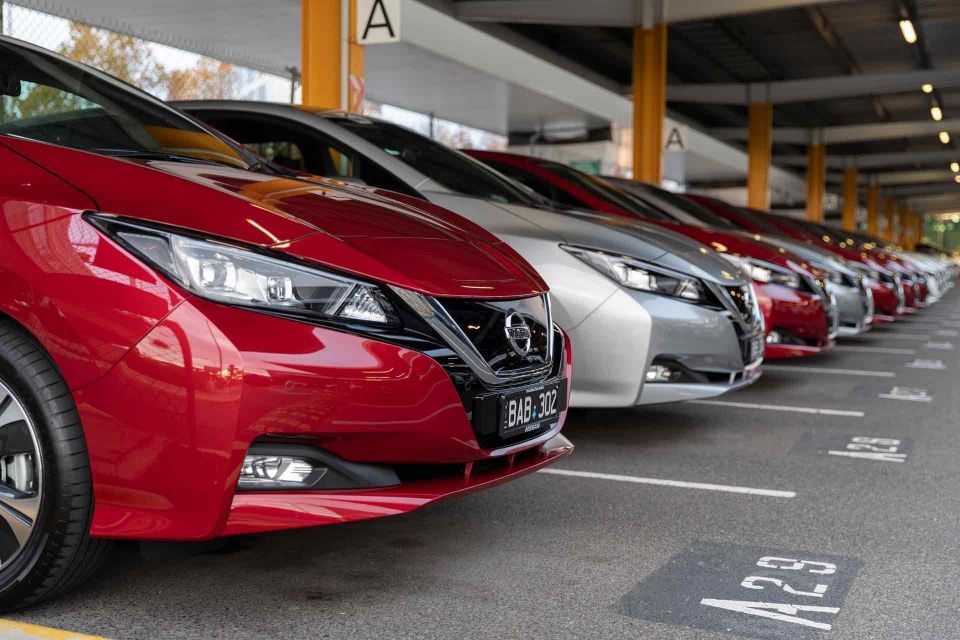
Recently Nissan has worked with the ACT Government and the Australian Renewable Energy Agency (ARENA) to trial this functionality in a project dubbed as ‘REVS’ (Realising Electric Vehicle-to-Grid Services).
The trial will see 51 Nissan Leaf hatchbacks join the ACT government fleet, and when plugged in via a two-way charger, the cars will provide what is known as an FCAS (Frequency Control Ancillary Service) to the National Electricity Market. FCAS is the process used to rapidly inject extra power, or reduce power as necessary, to maintain the frequency and stability of the energy grid.
MORE: Canberra plugs into vehicle-to-grid charging trial
ARENA claims the vehicles will have 70 per cent availability as they’ll be plugged in to two-way chargers when not on the road.
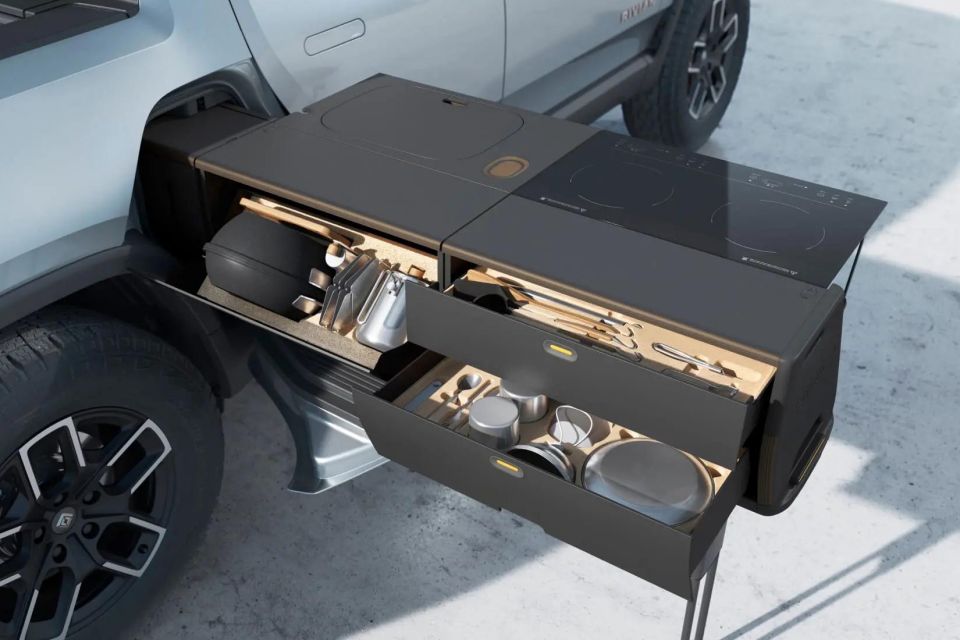
Currently, models based on the Hyundai-Kia E-GMP platform, such as the Ioniq 5 mentioned previously, as well as the Kia EV6 and Genesis GV60, all offer V2L functionality out of the box.
Meanwhile, the electric Nissan Leaf and the plug-in hybrid Mitsubishi Outlander and Eclipse Cross PHEVs offer V2H and V2G functionality if connected to the right equipment (which isn’t included with the purchase of the vehicle).
V2L functionality is also a key selling point of upcoming electric utes like the Ford F-150 Lightning, Rivian R1T, GMC Hummer EV and the Tesla Cybertruck. These vehicles all offer multiple 120V (American voltage standard) sockets in the truck bed that could be used to power and charge tools such as electric chainsaws and drills etc.
Interestingly, the Rivian R1T in particular will be available with a ‘camp kitchen’ option, which includes a 1.44kW two-burner induction cooktop, water pump, sink and faucet all powered by the car’s battery.


Max Davies
4 Hours Ago


Damion Smy
12 Hours Ago
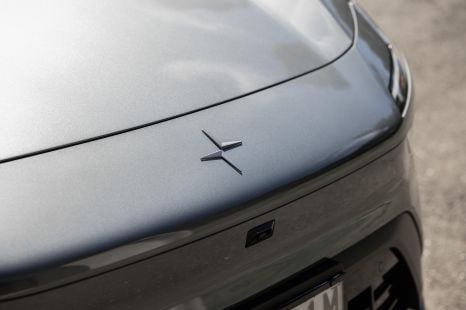

Damion Smy
13 Hours Ago


Damion Smy
14 Hours Ago


Damion Smy
17 Hours Ago


CarExpert.com.au
18 Hours Ago